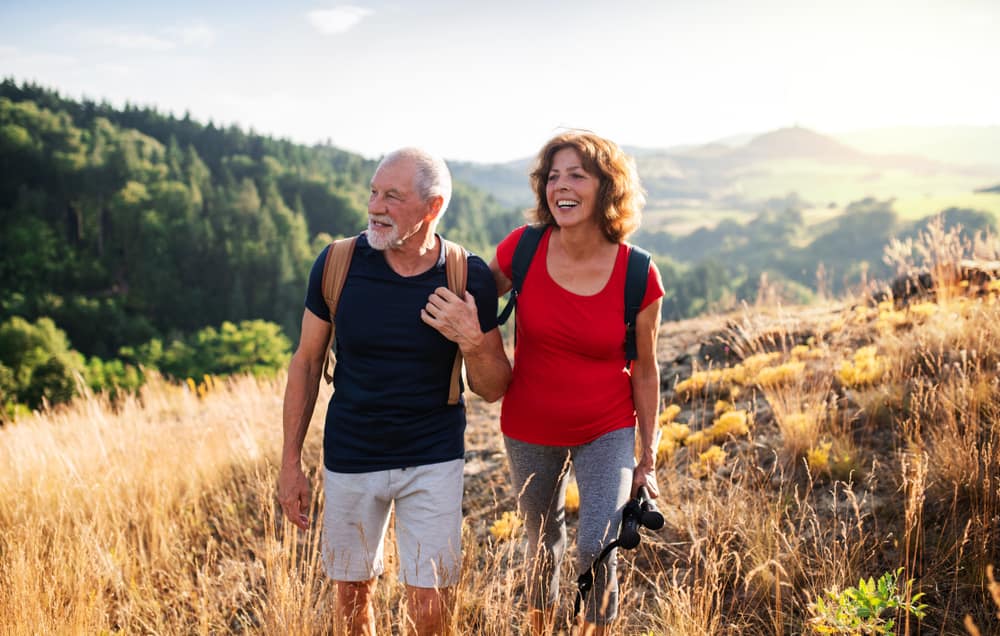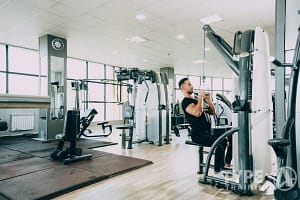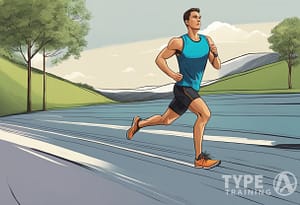Understanding Senior Fitness
As you age, your body undergoes various changes that can affect your physical abilities. However, this does not mean that you cannot stay fit and healthy. Senior fitness is all about understanding the unique physical changes that occur with aging and designing a safe and effective exercise routine tailored to your specific needs and abilities.
“Exercise is the single best thing you can do for your brain in terms of mood, memory, and learning.” – Harvard Medical School
Common Physical Changes with Aging
As you get older, your body undergoes various physical changes that can affect your fitness level. Some of the common changes include:
- Loss of muscle mass and strength
- Decreased bone density
- Reduced flexibility and range of motion
- Slower metabolism
- Decreased cardiovascular endurance
Importance of Exercise for Older Adults
Exercise is crucial for maintaining physical and mental health as you age. Regular exercise can help improve your muscle strength, balance, flexibility, and overall fitness level, which can reduce the risk of falls and injuries. Exercise can also help improve your mood, cognitive function, and quality of life.
Types of Exercise for Older Adults
There are four key types of exercise that are important for older adults:
- Endurance exercises: These exercises help improve your cardiovascular endurance and can include activities such as brisk walking, cycling, or swimming.
- Strength exercises: These exercises help improve your muscle strength and can include activities such as weight lifting, resistance band exercises, or bodyweight exercises.
- Balance exercises: These exercises help improve your balance and reduce the risk of falls. Examples include standing on one leg or walking heel-to-toe.
- Flexibility exercises: These exercises help improve your range of motion and can include activities such as stretching or yoga.
Safety Considerations
It is important to consider safety when designing an exercise routine for older adults. Some tips to keep in mind include:
- Start slow and gradually increase the intensity and duration of your exercise routine.
- Listen to your body and stop if you experience pain or discomfort.
- Stay hydrated and take breaks as needed.
- Wear appropriate footwear and clothing.
- Consult with your healthcare provider before starting a new exercise routine.
“Regular exercise can help older adults maintain their independence and improve their overall quality of life.” – National Institute on Aging
By understanding the physical changes that occur with aging and designing a safe and effective exercise routine, you can maintain your physical and mental health and improve your overall quality of life as you age.
Benefits of Senior Fitness
As you age, staying physically active and engaging in regular exercise can provide many benefits for your overall health and well-being. Here are some of the benefits of senior fitness:
Physical Benefits
Regular exercise can help improve your cardiovascular health, which can lead to a healthier heart and lower
Mental Benefits
Exercise is not only beneficial for your physical health, but it can also have a positive impact on your mental health. Regular exercise can help reduce symptoms of depression and anxiety, improve your mood, and boost your overall sense of well-being. Exercise can also help improve your cognitive function and reduce your risk of developing dementia.
“Exercise is a powerful tool to improve your mental health and cognitive function as you age.” – National Council on Aging
Social Benefits
Engaging in regular exercise can also provide social benefits. Joining a fitness class or exercise group can help you meet new people and make new friends. Additionally, exercising with others can help motivate you and keep you accountable, making it more likely that you will stick to your exercise routine.
Healthier Life
Engaging in regular exercise and maintaining a healthy diet can lead to a healthier, more active lifestyle overall. Exercise can help improve your sleep quality, reduce your risk of chronic diseases such as diabetes and heart disease, and increase your overall life expectancy.
There are countless studies that show regular exercise and physical activity can provide many benefits for seniors, including improved physical health, mental health, social connections, and overall well-being. By incorporating exercise into your daily routine, you can improve your quality of life and enjoy a healthier, more active lifestyle.
Related article: Benefits of Senior Fitness: Improving Health and Quality of Life
Cardiovascular Exercise for Seniors
Cardiovascular exercise is essential for seniors to maintain good health and prevent heart disease. According to the Centers for Disease Control and Prevention (CDC), adults aged 65 and older need at least 150 minutes of moderate-intensity activity per week, such as brisk walking, or 75 minutes of vigorous-intensity activity per week, such as hiking or running.
Benefits of Cardiovascular Exercise
Cardiovascular exercise has numerous benefits for seniors, including:
- Improved heart health
- Increased lung capacity
- Lowered
blood pressure - Reduced risk of chronic diseases such as diabetes and heart disease
Types of Cardiovascular Exercise
There are many types of cardiovascular exercise that are suitable for seniors, including:
- Walking: This low-impact exercise is easy on the joints and can be done indoors or outdoors.
- Swimming: Swimming is a great low-impact exercise that is easy on the joints and can help improve cardiovascular health.
- Cycling: Cycling is a great way to get your heart rate up and improve your cardiovascular health.
- Dancing: Dancing is a fun way to get your heart rate up and improve your cardiovascular health.
Precautions for Cardiovascular Exercise
Before starting any cardiovascular exercise program, it is important to talk to your doctor to make sure it is safe for you. It is also important to start slowly and gradually increase the intensity and duration of your workouts. If you experience any pain or discomfort during exercise, stop immediately and talk to your doctor.
Tips for Cardiovascular Exercise
To get the most out of your cardiovascular exercise program, consider the following tips:
- Wear comfortable and supportive
shoes - Stay hydrated by drinking plenty of water before, during, and after exercise
- Warm up and cool down before and after exercise
- Monitor your heart rate to make sure you are exercising at the appropriate intensity level
Related article: Cardiovascular Exercise for Seniors: Benefits and Guidelines
Strength Training for Seniors
Strength training is an essential part of senior fitness. It helps to maintain muscle mass, prevent age-related muscle loss, and keep bones strong. Additionally, it promotes mobility, prevents falls, and combats depression and cognitive decline. As you grow older, being active is more important than ever. Regular exercise can help improve muscle mass, manage symptoms of illness or pain, support independent living, and reduce your chances of developing cardiovascular or neurodegenerative diseases.
Getting Started
If you didn’t perform much strength training in your younger years (and even if you did), hitting the weight room now can be intimidating. Don’t sweat it! You don’t need to go to a gym to strength train. You can do it at home or in a park with minimal equipment. Start with bodyweight exercises, such as squats, lunges, push-ups, and planks. Gradually increase the intensity and resistance of your exercises.
Strength Training Frequency and Duration
You don’t need to strength train every day to see results. Aim for at least two strength training sessions per week, with a day of rest in between. Each session should last about 20 to 30 minutes. Don’t forget to include a variety of exercises that target different muscle groups, such as your legs, arms, chest, back, and core.
Progression and Tracking
As you get stronger, you need to increase the intensity and resistance of your exercises to continue seeing results. Use free weights, resistance bands, or weight machines to add resistance to your movements. Additionally, track your progress by recording your exercises, sets, reps, and weights. This will help you stay motivated and see how far you’ve come.
“Strength training is safe and effective for seniors, but it’s important to start slowly, use proper form, and progress gradually.” – Harvard Health Publishing
Strength training is an excellent way for seniors to improve their overall health and well-being. By incorporating strength training into your fitness routine, you can maintain muscle mass, prevent age-related muscle loss, and keep bones strong.
Related article: The Best Strength Training Exercises for Seniors
Flexibility and Mobility for Seniors
Maintaining flexibility and mobility is crucial for seniors to lead an active and independent lifestyle. As you age, your muscles and joints naturally become stiffer, which can lead to discomfort and decreased mobility. However, with regular stretching and mobility exercises, you can improve your flexibility and range of motion.
Benefits of Stretching and Mobility Exercises
Stretching and mobility exercises offer numerous benefits for seniors, including:
- Improved flexibility and range of motion
- Reduced risk of injury and falls
- Relief of joint pain and stiffness
- Improved posture and balance
- Increased blood flow and circulation
Types of Stretching Exercises
There are several types of stretching exercises that seniors can incorporate into their fitness routine, including:
- Static stretching: holding a stretch for a set amount of time
- Dynamic stretching: moving through a range of motion
- Proprioceptive neuromuscular facilitation (PNF) stretching: a technique that involves contracting and relaxing muscles while stretching
It’s important to note that stretching should be done after a proper warm-up to prevent injury. Additionally, stretches should be held for at least 10-30 seconds and repeated 3-5 times for maximum benefit.
Mobility Exercises
In addition to stretching, mobility exercises can help seniors maintain their range of motion and improve their overall mobility. Some examples of mobility exercises include:
- Calf raises
- Toe taps
- Shoulder rolls
- Leg swings
- Hip circles
According to SilverSneakers, “safety is key” when performing mobility exercises. If you have a chronic condition or balance issues, it’s important to talk to your doctor about how you can exercise safely.
Incorporating Stretching and Mobility into Your Fitness Routine
To get the most benefit from stretching and mobility exercises, it’s important to incorporate them into your fitness routine on a regular basis. Aim to perform flexibility exercises at least two days a week and incorporate mobility exercises into your daily routine.
Related article: Improve Your Balance, Strength, and Flexibility: Best Exercises for Seniors
Balance and Coordination for Seniors
As you age, maintaining balance and coordination becomes increasingly important to prevent falls and maintain independence. Fortunately, there are many exercises and activities that can help improve your balance and coordination.
Balance Exercises
Balance exercises can help improve your stability and prevent falls. Some examples of balance exercises include:
- Standing on one foot
- Heel-to-toe walk
- Tai chi
- Yoga
- Balance board exercises
It’s important to start with easy exercises and gradually increase the difficulty as your balance improves. Always make sure you have something nearby to hold onto in case you lose your balance.
Coordination Exercises
Coordination exercises can help improve your ability to perform everyday tasks, such as walking and reaching for objects. Some examples of coordination exercises include:
- Tossing a ball back and forth
- Marching in place while swinging your arms
- Stepping over cones or other objects
- Dancing
Like balance exercises, it’s important to start with easy exercises and gradually increase the difficulty.
Combining Balance and Coordination Exercises
Combining balance and coordination exercises can provide an even greater challenge and benefit. For example, you can try standing on one foot while tossing a ball back and forth with a partner.
Remember, it’s never too late to start improving your balance and coordination. Start with easy exercises and gradually increase the difficulty as you improve. With time and practice, you can improve your stability and maintain your independence.
Related article: Balance and Coordination Exercises for Seniors
Arthritis and Exercise for Seniors
If you’re a senior experiencing arthritis, you may be hesitant to exercise due to the pain and discomfort it may cause. However, exercise is one of the best ways to improve overall activity levels and manage pain, according to the Arthritis Foundation. Here are some things to keep in mind when considering exercise with arthritis:
Choose Low-Impact Activities
Low-impact exercises are those that don’t put a lot of stress on your joints. These exercises can help improve flexibility, joint mobility, and muscle strength without causing additional pain or damage. Examples of low-impact activities include:
- Walking
- Swimming
- Cycling
- Yoga
- Tai chi
Focus on Range-of-Motion Exercises
Range-of-motion exercises are designed to help improve joint flexibility and reduce stiffness. These exercises involve moving your joints through their full range of motion, without causing pain. Examples of range-of-motion exercises include:
- Shoulder rolls
- Ankle circles
- Wrist stretches
- Knee bends
Incorporate Strength Training
Strength training can help improve muscle strength and endurance, which can help support and protect your joints. However, it’s essential to start slowly and use proper form to avoid injury. Examples of strength training exercises include:
- Squats
- Lunges
- Wall push-ups
- Resistance band exercises
Don’t Overdo It
While exercise is beneficial for seniors with arthritis, it’s essential not to overdo it. Start slowly and gradually increase the intensity and duration of your workouts. If you experience pain or discomfort during exercise, stop and rest. Remember, it’s better to do a little bit each day than to do too much and risk injury.
As Dr. Patience White, MD, MA, chief public health officer for the Arthritis Foundation, said, “Exercise is one of the best things you can do to take care of yourself and manage arthritis. It can help reduce pain, improve function, and enhance your quality of life.” (source: Arthritis Foundation)
Related article: Arthritis and Exercise for Seniors: A Comprehensive Guide
Osteoporosis and Exercise for Seniors
As you age, your bones become weaker and more prone to fractures due to a condition called osteoporosis. However, regular exercise can help reduce your risk of developing osteoporosis and improve your bone density. Here are some ways to exercise safely and effectively:
1. Weight-bearing exercises
Weight-bearing exercises are activities that make you move against gravity while staying upright. These exercises help stimulate bone growth and improve bone density. Examples of weight-bearing exercises include:
- Brisk walking
- Jogging
- Dancing
- Hiking
- Stair climbing
2. Resistance training
Resistance training involves using weights or resistance bands to strengthen your muscles and bones. This type of exercise can help improve your balance, coordination, and posture, which can reduce your risk of falls and fractures. Examples of resistance training exercises include:
- Lifting weights
- Doing push-ups
- Using resistance bands
- Doing squats
3. Flexibility exercises
Flexibility exercises help improve your range of motion and reduce the risk of injury. These exercises can be done alone or as part of a warm-up or cool-down routine. Examples of flexibility exercises include:
- Stretching
- Yoga
- Tai chi
- Pilates
4. Balance exercises
Balance exercises help improve your stability and reduce your risk of falls. These exercises can be done alone or as part of a larger workout routine. Examples of balance exercises include:
- Standing on one foot
- Walking heel to toe
- Doing yoga poses that challenge your balance
- Using a balance board or stability ball
Regular exercise is important for seniors with osteoporosis to maintain bone density, improve muscle strength, and reduce the risk of falls and fractures. By incorporating weight-bearing exercises, resistance training, flexibility exercises, and balance exercises into your workout routine, you can improve your overall health and well-being.
Related article: Osteoporosis and Exercise for Seniors: A Comprehensive Guide
Diabetes and Exercise for Seniors
If you have diabetes, staying active is crucial to managing your condition. Exercise can help lower blood glucose levels, improve insulin sensitivity, and reduce the risk of heart disease. As a senior with diabetes, you may need to take extra precautions when exercising, but it is still possible to stay active and healthy.
Consult with Your Doctor
Before starting any exercise program, it is important to consult with your doctor. They can help you determine what type of exercise is safe for you and how much you should do. Your doctor may also recommend that you monitor your blood glucose levels before and after exercise to ensure that they stay within a safe range.
Choose Low-Impact Activities
Low-impact activities are easier on the joints and may be a better option for seniors with diabetes. Walking, swimming, cycling, and yoga are all great options. These activities can help improve cardiovascular health, increase flexibility, and reduce stress.
Stay Hydrated
Staying hydrated is important for everyone, but it is especially important for seniors with diabetes. When you exercise, your body loses fluids through sweat. Dehydration can cause your blood glucose levels to rise, so it is important to drink plenty of water before, during, and after exercise.
Be Prepared for Hypoglycemia
Hypoglycemia, or low blood glucose levels, can be a risk for seniors with diabetes who exercise. To prevent hypoglycemia, it is important to eat a snack before exercising and to carry a source of glucose with you, such as glucose tablets or juice.
“Carry a carbohydrate food or drink, such as hard candy or juice, to treat low blood glucose.” – Centers for Disease Control and Prevention
By staying active and following these guidelines, you can manage your diabetes and improve your overall health and well-being. Remember to always consult with your doctor before starting any new exercise program and to listen to your body.
Related article: Diabetes and Exercise for Seniors: A Comprehensive Guide
Heart Disease and Exercise for Seniors
If you have heart disease, exercise is still important for you. In fact, regular exercise can help improve heart function, lower
Talk to Your Doctor
Before starting any exercise program, it’s important to talk to your doctor. They can help you determine what types of exercise are safe for you and how much you should do. Your doctor may also recommend that you undergo a stress test to evaluate your heart’s response to exercise.
“For people with heart disease, exercise is still important. But it’s important to work with your doctor to develop a safe and effective exercise plan.” – Dr. Martha Gulati, Division Chief of Cardiology at the University of Arizona College of Medicine
Choose Low-Impact Activities
Low-impact activities are easier on your joints and less likely to cause injury. Some good options include walking, swimming, cycling, and yoga. Strength training can also be beneficial, but it’s important to use lighter weights and avoid exercises that put too much strain on your heart.
Monitor Your Heart Rate
When exercising with heart disease, it’s important to keep an eye on your heart rate. Your doctor can help you determine your target heart rate zone based on your age and fitness level. You can use a heart rate monitor or simply take your pulse to make sure you’re staying within your target zone.
Listen to Your Body
If you experience any chest pain, shortness of breath, or other symptoms while exercising, stop immediately and seek medical attention. It’s also important to pace yourself and not push yourself too hard. Gradually increase the duration and intensity of your workouts over time.
Remember, exercise can be an important part of managing heart disease, but it’s important to work with your doctor to develop a safe and effective exercise plan. By choosing the right activities, monitoring your heart rate, and listening to your body, you can stay active and healthy as you age.
Related article: Heart Disease and Exercise For Seniors: A Comprehensive Guide
Stroke and Exercise for Seniors
If you or a loved one has experienced a stroke, exercise can be an important part of the recovery process. According to the American Stroke Association, exercise can help stroke survivors restore strength and control through exercise programs. Here are some things to keep in mind when it comes to stroke and exercise for seniors:
Exercise Guidelines for Stroke Survivors
It is recommended that stroke survivors do 20 to 60 minutes of aerobic exercise every day. You can break up the exercise and get it done in intervals if you need to. Stroke survivors should also engage in strength training exercises two to three times per week to help improve muscle strength and endurance.
Benefits of Exercise for Stroke Survivors
Exercise can help improve health-related quality of life measures, such as mental health, physical fitness, walking, and balance. A study in the journal Stroke found that exercising for at least 150 minutes per week for at least 12 weeks after a stroke helped improve these measures.
Getting Started with Exercise
If you are unsure where to start with exercise after a stroke, consider working with a physical therapist or personal trainer who has experience working with stroke survivors. They can help create a safe and effective exercise program tailored to your specific needs and abilities.
As Dr. Richard L. Harvey, a neurologist and stroke specialist, notes, “Exercise after stroke is an important part of recovery. It can help improve physical and mental health, and help restore independence and quality of life.” (Source: American Stroke Association)
Related article: Stroke and Exercise for Seniors: A Comprehensive Guide
Preventing Falls and Injuries
Falls can be a serious concern for seniors, but there are steps you can take to prevent them. Here are some tips to help you stay on your feet and avoid injuries:
1. Improve Your Balance
Maintaining good balance is key to preventing falls. Consider trying exercises like tai chi, which can help improve your balance and coordination. You can also try standing on one foot for a few seconds at a time, or walking heel-to-toe in a straight line. These simple exercises can help improve your balance over time.
2. Wear Supportive Shoes
Wearing
“Wear
shoes that fit well and provide good support and traction.” – Mayo Clinic
3. Strengthen Your Ankles and Knees
Weak ankles and knees can increase your risk of falling. Consider doing exercises that target these areas, such as ankle circles or knee extensions. Strengthening these muscles can help improve your balance and stability.
4. Remove Hazards from Your Home
Making your home safer can also help prevent falls. Remove clutter from walkways and stairs, and make sure rugs are secured to the floor. Install grab bars in the bathroom and handrails on stairways to provide additional support.
By following these tips, you can help prevent falls and injuries and stay healthy and active as you age.
Related article: Fall Prevention for Seniors: A Comprehensive Guide
Nutrition for Senior Fitness
A healthy diet is essential for senior fitness. Eating a balanced diet that includes all the necessary nutrients can help you maintain muscle mass, improve bone density, and reduce the risk of chronic diseases.
Importance of a healthy diet
As you age, your body’s metabolism slows down, and your nutrient requirements change. Eating a healthy diet can help you maintain your energy levels, improve your mood, and keep you feeling good.
Recommended nutrients for seniors
Seniors need to consume a variety of nutrients to support their health. These include:
- Protein: Helps preserve muscle tissue. Women need about 46 grams a day, while men need about 56 grams. Good sources are low-fat milk, meat, fish, poultry, cooked dried beans, and nuts.
- Calcium and Vitamin D: Essential for bone health. Seniors should consume at least 1,200 milligrams of calcium and 800-1,000 IU of vitamin D daily. Good sources of calcium include low-fat dairy products, leafy green vegetables, and fortified cereals. Vitamin D can be obtained from sunlight, fortified foods, and supplements.
- Fiber: Helps maintain bowel regularity, lower cholesterol levels, and control blood sugar. Seniors need about 21-30 grams of fiber per day. Good sources include whole grains, fruits, vegetables, and legumes.
Foods to avoid
Some foods can be harmful to seniors’ health. These include:
- Processed foods: High in sodium, sugar, and unhealthy fats.
- Sugary drinks: Can lead to weight gain and increase the risk of chronic diseases.
- Alcohol: Can interfere with medication and increase the risk of falls.
The Role of Hydration for Seniors
Staying hydrated is essential for seniors’ health. Dehydration can lead to fatigue, confusion, and constipation. Seniors should aim to drink at least 8-10 cups of water per day. Other sources of hydration include herbal tea, low-fat milk, and fruits and vegetables with high water content.
As the National Council for Aging Care reports, “Many seniors lack variety in their diets or have reduced food intake, causing them to miss out on micronutrients that contain vitamins and minerals.” Therefore, it is important to consume a varied diet that includes all the necessary nutrients.
Related article: Nutrition for Senior Fitness: Essential Tips for a Healthy Lifestyle
Safety Tips for Senior Fitness
When it comes to senior fitness, safety should be a top priority. Here are some tips to help you exercise safely and avoid injuries:
Consulting with a Doctor
Before starting any new exercise program, it’s important to consult with your doctor. They can help you determine what types of exercises are safe for you based on your health and fitness level. They may also recommend certain exercises or modifications to help you avoid injury.
Warming Up and Cooling Down
Warming up before exercise and cooling down after exercise are important for preventing injuries. A proper warm-up should include light cardio exercises, such as walking or cycling, and stretching. Cooling down should also include stretching and light cardio to help your body recover.
Using Proper Equipment
Using the proper equipment is essential for preventing injuries during exercise. This includes wearing comfortable, supportive
Avoiding Overexertion
Overexertion can lead to injuries and should be avoided. Listen to your body and take breaks when needed. Start with low-impact exercises and gradually increase the intensity and duration of your workouts. If you experience pain or discomfort during exercise, stop immediately and consult with your doctor.
Related article: Exercise Without Risk: Senior Fitness Safety Tips
Overcoming Barriers to Senior Fitness
Staying active and engaging in physical fitness is important for everyone, regardless of age. However, many seniors face barriers that can make it difficult to stay fit and healthy. In this section, we will discuss some common barriers to senior fitness and provide tips on how to overcome them.
Lack of Motivation
One of the biggest barriers to senior fitness is a lack of motivation. It can be challenging to find the energy and enthusiasm to exercise regularly, especially if you are dealing with health issues or other age-related concerns. However, staying motivated is crucial for maintaining your physical and mental health.
To overcome this barrier, try setting realistic goals for yourself and tracking your progress. You might also consider finding an exercise buddy or joining a fitness class to help keep you accountable and provide some social support.
Physical Limitations
Another common barrier to senior fitness is physical limitations. As we age, our bodies may not be able to do the things they once could, and chronic health conditions can make it difficult to exercise safely and comfortably. However, it’s still important to find ways to stay active and mobile.
To overcome this barrier, consider working with a physical therapist or personal trainer who can help you develop a safe and effective exercise program. You might also try low-impact activities like swimming or yoga, which can be easier on your joints and muscles.
Time Constraints
Many seniors also face time constraints that can make it difficult to fit exercise into their busy schedules. Between doctor’s appointments, family obligations, and other commitments, it can be tough to find time for physical activity. However, regular exercise is essential for maintaining your health and wellbeing.
To overcome this barrier, try breaking up your exercise routine into shorter, more manageable chunks throughout the day. For example, you might take a brisk walk after breakfast, do some stretching exercises during your lunch break, and lift weights in the evening. As the National Institute on Aging notes, “Exercise first thing in the morning or combine physical activity with a task that’s already part of your routine.”
Financial Constraints
Finally, financial constraints can also be a barrier to senior fitness. Gym memberships, personal training sessions, and other fitness-related expenses can add up quickly, making it difficult to afford regular exercise. However, there are plenty of low-cost or free options available.
To overcome this barrier, consider taking advantage of community fitness programs, senior centers, or local parks and trails. You might also try exercising at home using free online videos or apps.
Related article: The Ultimate Guide to Overcoming Barriers to Senior Fitness
Resources for Senior Fitness
As you age, it’s important to stay active and maintain a healthy lifestyle. Finding the right resources for senior fitness can be a challenge, but there are many options available to you. Here are some resources that you can explore:
Local Senior Centers
Local senior centers are a great resource for finding fitness classes and activities in your area. These centers often offer a variety of classes, including yoga, tai chi, and strength training. You can also meet other seniors who share your interests and fitness goals. Check with your local senior center to see what fitness classes they offer.
Online Resources and Apps
There are many online resources and apps that can help you stay active and healthy. Websites like SilverSneakers and AARP offer free fitness videos and workouts for seniors. You can also download fitness apps like MyFitnessPal or Fitbit to track your progress and stay motivated.
Gym Memberships
Many gyms offer special memberships for seniors. These memberships often include access to fitness classes, personal training, and other amenities. Your local YMCA is a great place to start looking for gym memberships. They offer a program called SilverSneakers, which provides free gym memberships to seniors who qualify.
Community Programs
Community programs are another great resource for senior fitness. These programs are often offered through local parks and recreation departments or community centers. They may include activities like walking groups, dance classes, and fitness challenges. Check with your local community center to see what programs they offer.
Remember, it’s never too late to start a fitness routine. With the right resources and support, you can stay active and healthy as you age.
Related article: Aging Well: 38 Essential Tips for Senior Health and Wellness
Frequently Asked Questions
What exercise should a 70 year old do?
As a 70-year-old, it’s important to engage in physical activity that is safe and appropriate for your age. Low-impact exercises such as walking, swimming, cycling, and yoga are great options. These exercises help maintain cardiovascular health, improve flexibility, and reduce the risk of falls.
What is a good workout for a 70 year old man?
A good workout for a 70-year-old man should include a combination of aerobic exercises, strength training, and balance exercises. Aerobic exercises such as brisk walking, cycling, or swimming help to improve cardiovascular health, while strength training helps to maintain muscle mass, bone density, and improve overall functional ability. Balance exercises such as standing on one leg or heel-to-toe walking can help reduce the risk of falls.
What are the four main types of exercise that seniors need to stay healthy?
The four main types of exercise that seniors need to stay healthy are aerobic exercise, strength training, balance exercises, and flexibility exercises. Aerobic exercise helps to maintain cardiovascular health, strength training helps to maintain muscle mass and bone density, balance exercises reduce the risk of falls, and flexibility exercises improve range of motion and prevent injury.
What is the number one balance exercise for seniors?
The number one balance exercise for seniors is the single-leg stance. Stand on one leg for as long as possible, then switch to the other leg. This exercise helps improve balance and reduce the risk of falls.
“Balance exercises are important for seniors because they help improve stability and reduce the risk of falls.” – National Institute on Aging
How can seniors improve their flexibility?
Seniors can improve their flexibility through stretching exercises such as yoga, Pilates, or static stretching. These exercises help to improve range of motion, reduce stiffness, and prevent injury.
What are the benefits of strength training for seniors?
Strength training has many benefits for seniors, including maintaining muscle mass and bone density, improving functional ability, and reducing the risk of falls. It also helps to improve balance, posture, and overall quality of life.






















